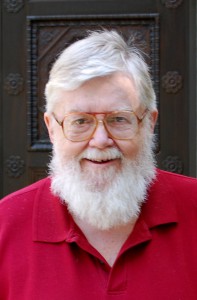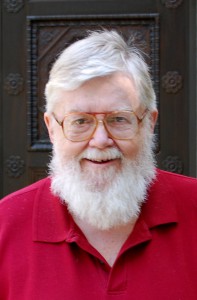 In the fall of 2010 I was in the midst of researching and writing the seventh and final volume in the Great Migration second series. The publication of that volume in 2011 would mean that sketches had been published for all Great Migration immigrants from 1620 to 1635, somewhat less than one-half of all those who came to New England during the entire Great Migration period, from 1620 to 1640. Given the quarter-century it has taken to reach this point in the Great Migration Study Project, I eventually, and reluctantly, concluded that I would not be the person to write the sketches for immigrants who arrived in New England between 1636 and 1640. And yet I did not want to abandon the Project at that point, and so began to cast about for a mechanism by which I could at least survey the remaining immigrants.
In the fall of 2010 I was in the midst of researching and writing the seventh and final volume in the Great Migration second series. The publication of that volume in 2011 would mean that sketches had been published for all Great Migration immigrants from 1620 to 1635, somewhat less than one-half of all those who came to New England during the entire Great Migration period, from 1620 to 1640. Given the quarter-century it has taken to reach this point in the Great Migration Study Project, I eventually, and reluctantly, concluded that I would not be the person to write the sketches for immigrants who arrived in New England between 1636 and 1640. And yet I did not want to abandon the Project at that point, and so began to cast about for a mechanism by which I could at least survey the remaining immigrants.
What I came up with, in discussing my dilemma with friends and colleagues, was a two-step process. First, I would compile a preliminary checklist of all those immigrants who came to New England between 1636 and 1640. I would create this checklist by undertaking a systematic survey of all surviving records generated in New England for those years, and taking note of individuals who had not already been covered in the published Great Migration volumes. This first step is identical with the procedure I employed for the published volumes of sketches.
Second, I would merge this checklist with the list of sketches already created for the three volumes of Great Migration Begins and the seven volumes of the second Great Migration series. From this merged list of all Great Migration immigrants, I would create concise entries for each head of family or isolated individual, each entry to include a limited amount of information about the immigrant, including English origin (if known), year of arrival, and the best available treatment of the immigrant in the secondary literature.
For those persons in the checklist who arrived between 1620 and 1635, I would create entries by extracting information from the published sketches (and, when relevant, taking note of more recent research). For those who arrived between 1636 and 1640, I would create entries by adding to the checklist whatever additional data points were required to generate a useful entry, especially English origins. In this way, the resulting reference work would present enough information about every Great Migration immigrant to provide the researcher with an easy path to the best treatments of an immigrant of interest (or to indicate that no useful treatment yet existed).
As examples of my method, here is an updated entry for someone in The Great Migration Begins (see any of the earlier published Great Migration volumes for a key to abbreviations):
Thomson, James: Fishtoft, Lincolnshire; 1633; Charlestown, Woburn [GMB 1809-11; TAG 74:101-4].
Here is someone new to the series, first seen in 1637:
Martin, Ambrose: Unknown; 1637; Dorchester, Concord; not seen after 1642 [DTR 24, 28, 30; DChR 4; CoVR 2; MBCR 1:252].
Adapted from “Documenting New England’s Founders in The Great Migration Directory” in the Summer 2015 issue of American Ancestors magazine (a benefit of NEHGS membership). The Great Migration Directory will be published in June 2015.
Share this:

About Robert Charles Anderson
Robert Charles Anderson, Director of the Great Migration Study Project, was educated as a biochemist and served in the United States Army in electronics intelligence. In 1972 he discovered his early New England ancestry and thereafter devoted his time and energies to genealogical research. He published his first genealogical article in 1976, and about the same time began to plan for what eventually became the Great Migration Study Project. In 1983 he received a Master’s degree in colonial American History from the University of Massachusetts at Amherst. Anderson was elected a Fellow of the American Society of Genealogists in 1978 and has served as Secretary and President of that organization. He became a Contributing Editor of The American Genealogist in 1979, Associate Editor in 1985 and Coeditor in 1993. He has been an editorial consultant to the New England Historical and Genealogical Register since 1989.View all posts by Robert Charles Anderson →